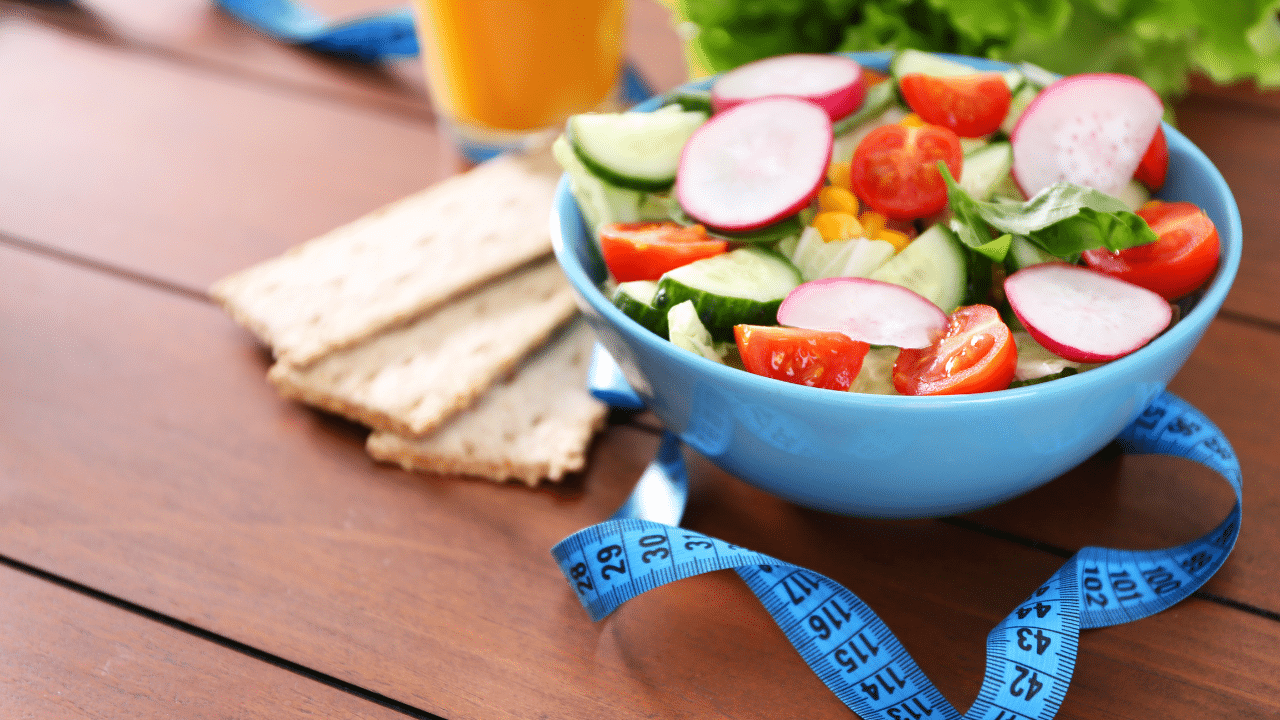
Effective Weight Loss Plan for Women Over 40
Ever wondered why your favorite jeans suddenly feel tighter, even though your habits haven’t changed? If you’re in your 40s, you’re not alone. Many women face stubborn weight shifts during this stage of life.
Hormonal changes, slower metabolism, and lifestyle adjustments can make shedding extra pounds feel like an uphill battle. But here’s the good news—sustainable results are possible without extreme diets or deprivation.
Through personal experience, I discovered that a balanced approach—focusing on strength training, protein intake, and mindful tracking—helped me lose 5-10 lbs. The NHS Weight Loss Plan app became a helpful tool, reinforcing habits over a 66-day period.
Key Takeaways
- Midlife weight changes are common due to hormonal shifts.
- Strength training and protein help maintain muscle and metabolism.
- Habit formation takes about 66 days, according to research.
- Free tools like the NHS app can support your journey.
- Long-term success comes from sustainable lifestyle adjustments.
Why Weight Loss Feels Different After 40
Hitting your 40s often brings unexpected changes to how your body responds to diet and exercise. Hormonal shifts and declining muscle mass alter your metabolism, making fat loss more challenging than in your 20s. Understanding these changes helps you adapt your strategy for lasting results.
The Role of Hormonal Shifts in Metabolism
Perimenopause, starting as early as 35, triggers estrogen decline. This hormone regulates glucose metabolism, and its reduction slows your metabolic rate by 4–5%. Johns Hopkins research notes that lower estrogen also redistributes fat to the abdomen, increasing diabetes risk sevenfold.
Cortisol, the stress hormone, worsens the effect. It spikes cravings for sugary foods while directing fat storage to your midsection. Combined with insulin resistance—linked to a 23% higher diabetes risk—this creates a perfect storm for weight gain.
How Muscle Loss Slows Calorie Burning
After 30, muscle mass decreases by 3–8% per decade due to sarcopenia. Since muscle burns more calories than fat, this loss significantly impacts energy expenditure. For example, 50 pounds of muscle torches 500+ daily calories—equivalent to a large meal.
| Age | Metabolic Rate Change | Key Factors |
|---|---|---|
| 20s | High | Peak muscle mass, stable hormones |
| 40s | Slowed by 4–5% | Estrogen decline, sarcopenia |
Strength training becomes critical to counteract muscle loss. Pair it with adequate protein to preserve lean tissue and keep your metabolism active.
Mindset Shifts for Sustainable Weight Loss
Scales don’t tell the full story—your body’s transformation goes beyond numbers. Obsessing over pounds can hide progress like tighter clothes or increased energy. A DEXA scan or tape measure often reveals fat loss and muscle gain that the scale misses.
Measure Progress Beyond the Scale
Body recomposition focuses on fat-to-muscle ratio, not just weight. For example, strength training might show minimal scale changes but reduce waist measurements by 2+ inches. Track metrics like:
- Weekly photos in consistent lighting
- Strength gains (e.g., lifting heavier weights)
- Energy levels and sleep quality
Build Habits That Stick
Research shows habits take 66 days to solidify. The ALIGN worksheet helps track small wins, like swapping processed snacks for whole foods. These choices prevent 500+ daily excess calories from derailing progress.
Adopt the “correct and continue” mindset: slip-ups are data, not failures. Journal for 15 minutes weekly about your “why”—this reduces stress-linked cortisol spikes that trigger cravings.
“Consistency isn’t perfection. It’s returning to your plan faster after deviations.”
Phase new habits over four weeks: start with hydration, add protein targets, then incorporate strength training. This gradual approach fosters a lifestyle shift, not a temporary fix.
The Best Weight Loss Plan for Women Over 40
Fueling your body right after 40 means focusing on key nutrients for lasting energy. A strategic balance of protein and fiber-rich carbs can combat metabolic slowdowns and keep you feeling strong.
Prioritizing Protein to Build and Preserve Muscle
Aim for 1 gram of protein per pound of your goal weight. For example, if you target 140 lbs, consume 140g daily. Protein has a 20–25% thermic effect, meaning your body burns more calories digesting it compared to fats or carbs.
Choose high-quality sources like chicken breast, salmon, or plant-based options such as lentils and quinoa. Here’s how they compare:
| Protein Source | Protein per 100g | Key Benefits |
|---|---|---|
| Chicken Breast | 31g | Lean, versatile |
| Lentils | 9g | High fiber, iron-rich |
Why Fiber-Rich Carbs Are Your Allies
Complex carbs like sweet potatoes and oats reduce cortisol spikes by stabilizing blood sugar. Time them around workouts to replenish glycogen stores efficiently.
Incorporate these high-fiber veggies to minimize bloating:
- Cucumbers: Hydrating, low-calorie
- Asparagus: Natural diuretic properties
- Brussels sprouts: Rich in resistant starch for gut health
“A client lost 12 lbs in 8 weeks by pairing protein-first meals with timed carb intake.”
Avoid ultra-processed snacks that disrupt hormones. Instead, try a 7-day framework: protein at every meal, carbs post-workout, and fiber-filled snacks like almonds or berries.
Foods to Embrace (and Avoid) for Optimal Results
Not all calories are created equal, especially when hormones are in flux. Prioritizing nutrient-dense foods supports metabolism, while processed options can trigger cravings and fat storage. Here’s how to build a plate that works with your body—not against it.
Powerhouse Vegetables and Lean Proteins
Non-starchy vegetables should fill 50% of your plate. They’re low in calories but rich in fiber, which stabilizes blood sugar. Pair them with lean proteins to preserve muscle and boost satiety.
Green-light foods:
- Spinach: Packed with iron and magnesium to combat fatigue.
- Salmon: High in omega-3s, which reduce inflammation.
- Chia seeds: Provide plant-based protein and soluble fiber.
Vitamin B-12 absorption declines with age. Include fortified nutritional yeast or shellfish to meet dietary needs. Fermented foods like kimchi also enhance gut health, aiding nutrient uptake.
Ultra-Processed Foods That Hijack Hormones
Many “diet” products contain hidden sugars and additives. For example, flavored yogurts can have 15g of sugar per serving—more than some desserts. Protein bars often include carrageenan, linked to bloating and insulin resistance.
Swaps to try:
- Dairy alternative: Almond milk with added calcium (120mg per cup).
- Healthy fats: Avocado oil (stable at high heat) over seed oils.
- Spice blends: Turmeric + black pepper for anti-inflammatory benefits.
“A client reduced bloating by 80% in two weeks after cutting out carrageenan and BPA-lined cans.”
Check labels for hormone disruptors like BPA in canned goods. Opt for fresh or frozen vegetables when possible. Small tweaks add up to significant metabolic wins.
Strength Training: Your Metabolic Game-Changer
Building strength isn’t just about lifting weights—it’s about transforming your metabolism. Unlike cardio, which burns calories only during the activity, resistance exercise elevates your resting energy expenditure for hours afterward. This makes it a powerhouse for long-term results.
How Heavy Lifting Boosts Resting Calorie Burn
Compound lifts like squats and deadlifts engage multiple muscle groups, creating an “afterburn” effect. Studies show this can increase calorie burn by 5–10% for up to 72 hours post-workout. For example, a 150-pound person might torch an extra 150–300 calories daily—just by recovering.
Here’s the science: Muscle mass is metabolically active. Every pound burns 6–10 calories at rest, while fat burns just 2–3. Strength training also protects bone density, reducing fracture risk by 45% in postmenopausal women.
Sample Weekly Workout Plan
Aim for 4–5 sessions weekly, alternating muscle groups. Use progressive overload—adding 5% more weight or reps each week. Here’s a 6-week framework:
- Day 1 (Lower Body): Squats (3×8), Romanian deadlifts (3×10), calf raises (2×15).
- Day 2 (Upper Body): Push-ups (3×12), bent-over rows (3×8), shoulder presses (2×10).
- Day 3 (Core/Cardio): Plank rotations (3×30 sec), brisk walking (30 min).
“Clients who lifted 3x weekly lost 3x more belly fat than cardio-only groups in a 12-week study.”
Recovery Matters: Refuel with 20g protein within 30 minutes post-workout. Hydrate well and prioritize sleep to maximize muscle repair. Avoid back-to-back heavy sessions to prevent overuse injuries.
Walking: The Underrated Fat-Burning Tool
Walking isn’t just for leisure—it’s a science-backed fat burner. Unlike intense workouts, it’s sustainable daily and combats metabolic slowdown. A 12-pound weighted vest can amplify calorie burn by 20%, turning a casual walk into resistance training.
Why 8,000–10,000 Steps Daily Matters
Hitting this range improves insulin sensitivity, reducing post-meal glucose spikes by 26%. It also boosts NEAT (non-exercise activity thermogenesis), which accounts for 15–50% of daily calorie expenditure. For perspective:
- 5 miles ≈ 10,000 steps: Burns ~400 calories (equivalent to a 45-minute spin class).
- NEAT vs. gym sessions: Walking meetings add 2,300+ steps/day without extra time.
Tips to Boost Daily Movement
Small tweaks make stepping easier:
- Posture: Align ears over shoulders to engage core muscles.
- Foot health: Rotate shoes (e.g., cushioned vs. minimalist) to prevent strain.
- Tech tools: Garmin tracks steps 12% more accurately than Fitbit in studies.
“A desk treadmill helped my client log 6,000 steps by noon—without leaving her home office.”
For office setups, try a compact treadmill desk or adjust your chair height to encourage standing. Every 2,000 extra steps/day burns ~100 calories—a simple way to outpace age-related metabolic dips.
Managing Stress and Sleep for Weight Loss
Your body’s ability to shed fat isn’t just about diet and exercise—it’s deeply tied to how you manage stress and sleep. High cortisol levels and poor sleep can sabotage even the most disciplined efforts. Understanding these connections helps you create a holistic approach to wellness.
Cortisol’s Impact on Belly Fat Storage
Chronic stress elevates cortisol, a hormone that directs fat storage to your midsection. Research shows that timing carb intake can reduce cortisol by 30%. For example, consuming complex carbs like quinoa in the evening helps stabilize blood sugar overnight.
Signs of cortisol imbalance include:
- Waking up tired despite adequate sleep
- Cravings for salty or sweet foods
- Difficulty losing belly fat despite calorie deficits
The Navy SEAL breathing method (4-7-8 technique) can lower cortisol quickly. Inhale for 4 seconds, hold for 7, exhale for 8. Repeat four times to activate your parasympathetic nervous system.
Sleep Hygiene Strategies for Better Recovery
Quality sleep boosts growth hormone production during REM cycles. Poor sleep increases diabetes risk by 40% and slows fat metabolism. Track your patterns with devices like Oura rings, which measure deep sleep phases more accurately than fitness bands.
Try these evidence-based adjustments:
- Take 200–400mg magnesium glycinate before bed to improve sleep quality
- Avoid blue light 90 minutes before bedtime—it suppresses melatonin by 50%
- Follow a consistent bedtime routine (e.g., warm shower, light stretching)
“Clients who fixed sleep debt first lost 3x more fat than those focusing solely on diet.”
Calculate your sleep debt by comparing actual sleep to the recommended 7–9 hours. If you’re consistently short by 2 hours nightly, you’ve accumulated a 14-hour deficit by week’s end—equivalent to an entire night’s rest.
Navigating Perimenopause and Weight Loss
Perimenopause reshapes your body in ways you might not expect—especially when it comes to fat storage. Hormonal fluctuations during this phase influence metabolism, appetite, and even where fat accumulates. Understanding these changes helps you adapt strategies for lasting results.
How Estrogen Decline Affects Fat Distribution
Estrogen receptors in fat cells determine where your body stores energy. As levels drop, fat shifts from hips to the abdomen. This visceral fat increases blood pressure and diabetes risk by 7x, per Johns Hopkins research.
Phytoestrogens in foods like flaxseeds and edamame may mildly offset symptoms. However, they’re 1,000x weaker than natural estrogen. Prioritize these to support balance:
- Soy products: Tempeh (53mg isoflavones per 100g)
- Flaxseeds: Lignans mimic estrogen’s protective effects
- Legumes: Chickpeas offer fiber + phytoestrogens
When to Consider Medical Support (Like HRT)
Hormone replacement therapy (HRT) reduces diabetes risk by 30% and preserves muscle mass. The DUTCH test helps identify imbalances, guiding personalized treatment. Compare delivery methods:
| Type | Pros | Cons |
|---|---|---|
| Patches | Steady absorption, avoids liver | Skin irritation |
| Pills | Convenient | Higher clot risk |
“Bioidentical HRT matched to your lab results minimizes side effects like bloating.”
SERMs (selective estrogen receptor modulators) offer alternatives for those with cancer concerns. Always consult a menopause specialist to weigh trade-offs.
7-Day Meal Plan for Balanced Nutrition
Eating right doesn’t mean bland meals or strict rules. A well-structured meal plan fuels your body while keeping energy steady. Focus on fiber-rich foods and smart pairings to avoid blood sugar spikes.
Breakfasts That Stabilize Blood Sugar
Start your day with 30g of protein to curb mid-morning cravings. High-protein breakfasts reduce glucose fluctuations by 35% compared to carb-heavy options. Try these easy recipes:
- Chia Pudding: Mix 3 tbsp chia seeds with almond milk, 1 scoop vanilla protein powder, and berries. Refrigerate overnight.
- Savory Omelet: 3 eggs with spinach, feta, and avocado. Serve with roasted sweet potatoes.
- Greek Yogurt Bowl: Full-fat yogurt topped with walnuts, flaxseeds, and cinnamon.
| Meal | Protein (g) | Fiber (g) |
|---|---|---|
| Chia Pudding | 32 | 12 |
| Savory Omelet | 28 | 6 |
| Greek Yogurt Bowl | 30 | 8 |
Pair breakfast with kombucha for probiotics. Ginger-lemon flavors aid digestion without added sugar.
Snacks to Curb Cravings Without Guilt
Smart snacking prevents energy crashes. Combine protein, healthy fats, and fiber for lasting satisfaction. Here’s a crave-busting matrix:
- Sweet: Apple slices with almond butter (choose brands with
- Savory: Roasted chickpeas with sea salt and turmeric.
- Crunchy: Cucumber rounds topped with turkey and hummus.
“Clients who prepped snacks in jars reduced impulsive eating by 40% in a Cornell study.”
Batch-cook freezer-friendly options like egg muffins or lentil patties. Label containers with net carb counts to stay within daily targets.
Conclusion: Your Roadmap to Lifelong Health
Small, consistent changes create lasting results. Focus on building habits that fit your lifestyle, not quick fixes. Studies show those who track progress maintain a healthy weight 3x longer.
Use these checkpoints to stay on track:
- Reassess body composition every 6 months with DEXA scans
- Join online communities for accountability
- Download the NHS app for daily reminders
Celebrate non-scale victories like better sleep or stronger lifts. Health isn’t a destination—it’s a journey you refine over time.
Ready to begin? Grab the free ALIGN worksheet to map your personalized plan. You’ve got this!
FAQ
Why is losing weight harder after 40?
Hormonal changes, like lower estrogen, slow metabolism. Muscle loss also reduces calorie burn, making fat loss more challenging.
Should I focus on the scale or body composition?
Prioritize body recomposition—building muscle while losing fat. The scale may not reflect progress, but measurements and how clothes fit will.
How much protein should I eat daily?
Aim for 1.2–1.6 grams per kilogram of body weight. Protein preserves muscle, keeps you full, and supports metabolism.
What’s the best workout for boosting metabolism?
Strength training 2–3 times weekly lifts resting calorie burn. Add walking (8,000–10,000 steps/day) for steady fat loss.
Can stress affect my weight?
Yes. High cortisol increases belly fat storage. Manage stress with deep breathing, yoga, or meditation.
Are carbs bad for women over 40?
No! Fiber-rich carbs (veggies, quinoa) stabilize blood sugar. Avoid refined carbs like white bread and sugary snacks.
How does sleep impact weight loss?
Poor sleep disrupts hunger hormones, increasing cravings. Aim for 7–9 hours nightly with a consistent bedtime routine.
Should I try hormone therapy for weight loss?
Consult your doctor. HRT may help with menopause symptoms, but lifestyle changes are the foundation for lasting results.




